-
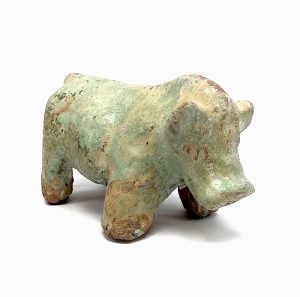
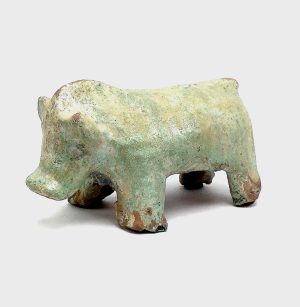
$395.00
H: 2.5” W: 4.5” D: 2.375” | FREE SHIPPING!
This glazed pig mingqi was one of many items made for a tomb to placate the spirit of the deceased and assure the soul’s access to the things enjoyed when alive. This animal mingqi confirms the importance of pigs as a food source and of raising livestock in Han China. An alert animal whose stocky body is typical, it’s dark lead green glaze and damp tomb created a chemical reaction over centuries making it a lustrous, iridescent green impossible to copy that is highly valued in China and by collectors. In very good condition, it has expected glaze losses, minor abrasions and cracks due to its age and long tomb burial.
-
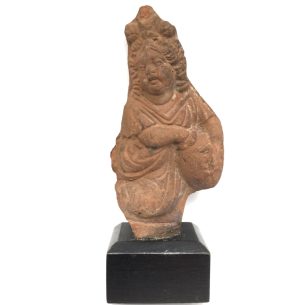
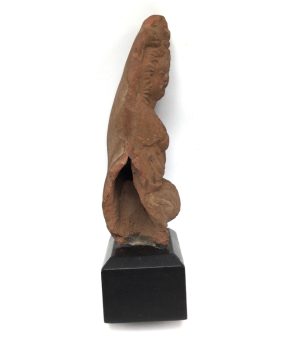
$395.00
Ht: 6.5” W: 2.625” D: 1.75” | FREE SHIPPING!
This figure is Harpocrates the Greek god of silence, confidentiality and secrets holding a jar and was made using a bivalve-mould. The iconography hints at a royal and temple cult, as he wears a double crown symbolizing both Upper and Lower Egypt. A royal emblem showing an association with the contemporary king, in Egypt royals with crowns were a manifestation of the Egyptian god Horus. Small white specks are all that remains of the slip and colorful paints covering it. Missing part of his right side when excavated, there are no repairs and it is mounted on a stand. Given its age, the image is in good condition with normal scrapes and cracks found in pieces of this age.
-
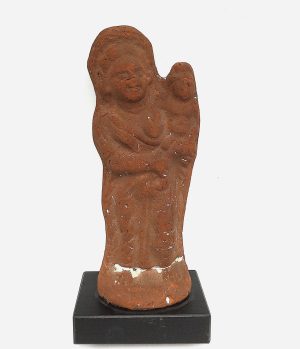
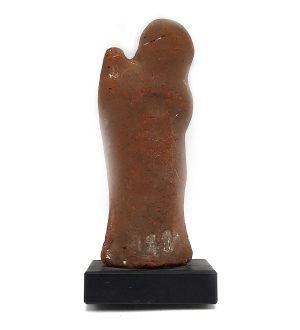
$395.00
Ht: 6.75” W: 3” D: 2” | FREE SHIPPING!
This Roman Egyptian figurine from Alexandria of a woman holding a young child is a Kourotrophos, a class of god and goddess figures holding infants or children. Referred to as child nurturers, these were revered deities, cult figures and mortals who were also fertility symbols and protectors of the young. Mother and child figures like this are universal and appear known in disparate cultures throughout the world.
-
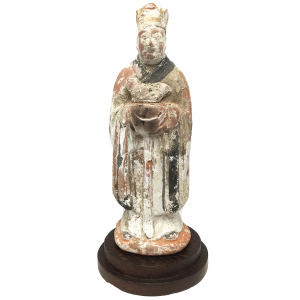
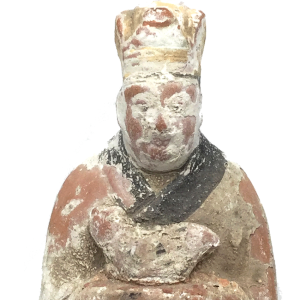
$395.00
H: 7.375” W: 2.75” D: 2.5” | FREE SHIPPING!
A group of 12 zodiac figures as mingqi sometimes accompanied the wealthy deceased in their tomb. This Ming dynasty earthenware figurine stands on a low circular base and wears an official’s hat and long flowing robes. It is difficult to identify the specific animal held here but it may be a rabbit, small dog or baby pig. The detailed figure is hollow and partially mould-made and unlike glazed mingqi, was covered with a white slip and painted using black and white pigments which are mostly extant.
-
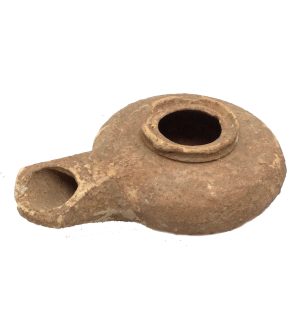
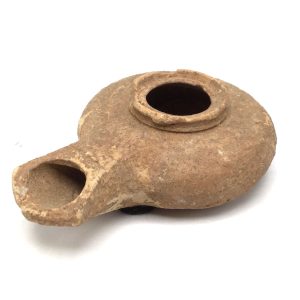
$155.00
SOLD
This Roman catacomb terracotta oil lamp is a basic, undecorated, and functional lamp beautiful in its simplicity. It is a well moulded piece with a finely rounded circular body, a short raised rim surrounding the fill hole centered in the middle, and has a hand made spatulate nozzle added to its body. The nozzle extends out with flat angular ridges and a wide opening to accommodate the wick which extends from inside the lamp,through the nozzle, and then reaches over its edge. It has no handle but, like all such lamps, it has a flat bottom to rest comfortably and securely on any surface. Much of the original crème slip on this lamp remains and has turned a brownish-beige from the soil in which it was buried underground. There are minor chips the rim atop the fuel chamber and projecting nozzle and is otherwise is very good condition.
-
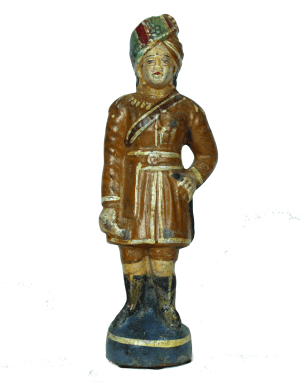
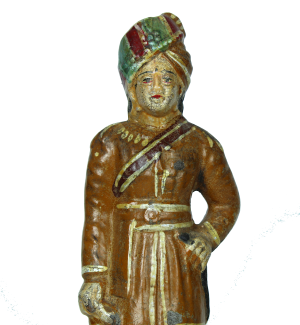
$105.00
H: 10.25 W: 3.5″ D: 2.75″ | FREE SHIPPING!
This colorful terracotta figurine of an Indian policeman stands on a blue base wearing a typical outfit of black boots, a long-sleeved tunic with white borders, a high belt, and a red, green, and brown wrapped turban with white borders that combine to portray an extremely confident figure. This vintage image is mold-made in two parts and was hand-luted and artfully hand-painted so all images made from the mold are unique and individualized. The provincial piece was created by a village craftsman and it is possible it may have been used in a home altar. It is in good condition with some minor surface cracks, paint losses and repainting to the nose.
-
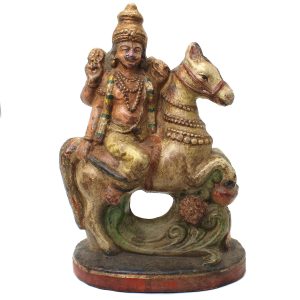
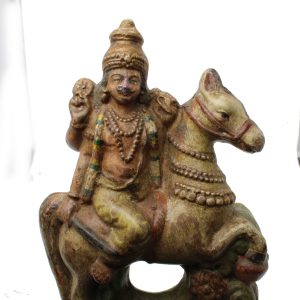
$145.00
H: 9.125″ W: 6.125″ D: 3.5″ |FREE SHIPPING WITHIN CONTINENTAL U.S.!
This charming colorful terracotta image represents a crowned mustached raja – an Indian King, prince, noble or dignitary – with an elaborate high crown and sumptuous jewelry draped over his chest riding an elegant and well-muscled rearing horse with its front right leg in the air, a common theme in Indian art. The decorative garlands around the horse’s neck, green plants, and ground over which the horse and rider glide, long arching horse tail, the twist of the raja’s body so he faces forward, and other aspects of the piece add dramatic energy. Made from bivalve moulds that are hand luted and painted, no two images are identical.
End of content
End of content














